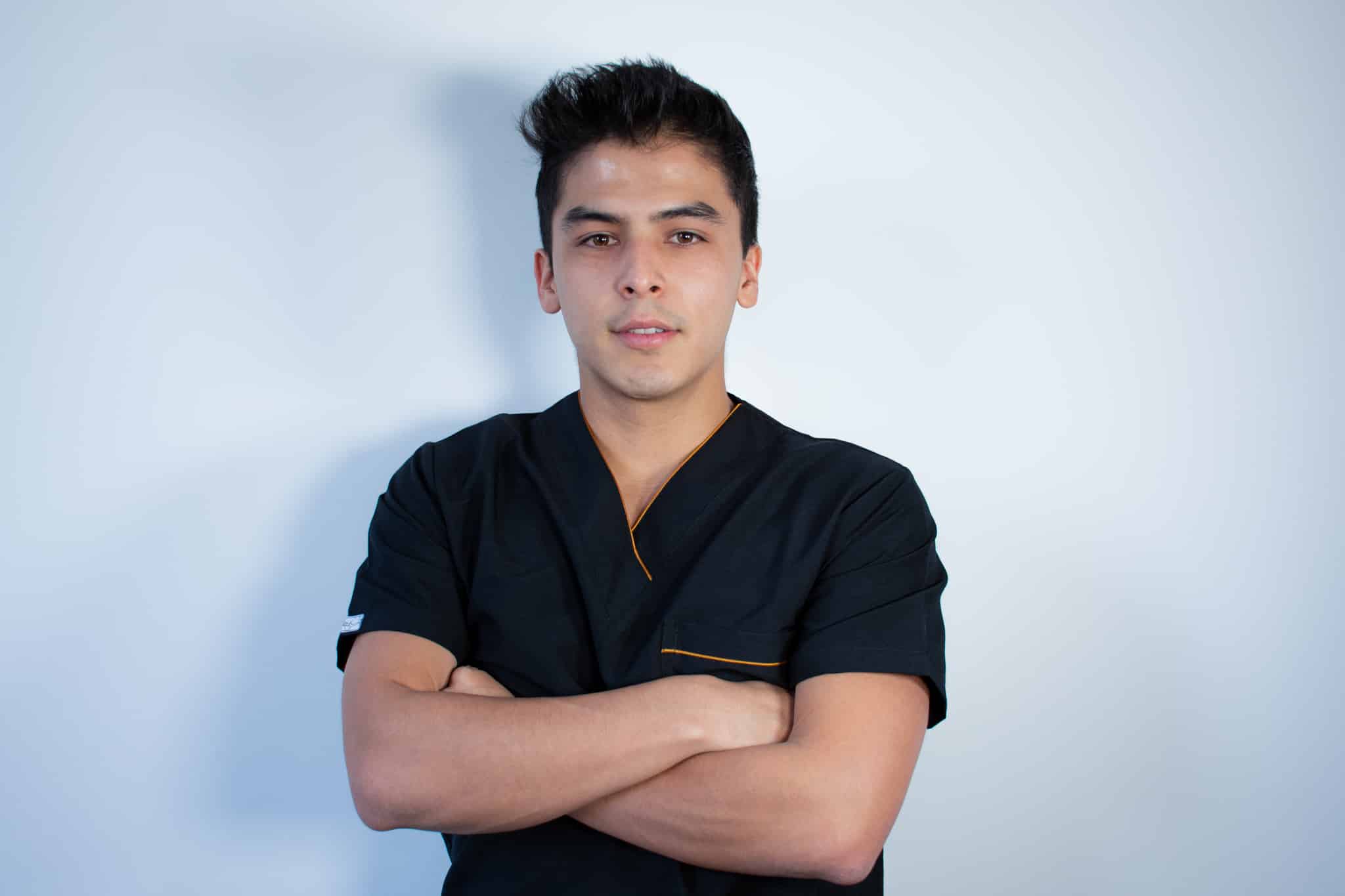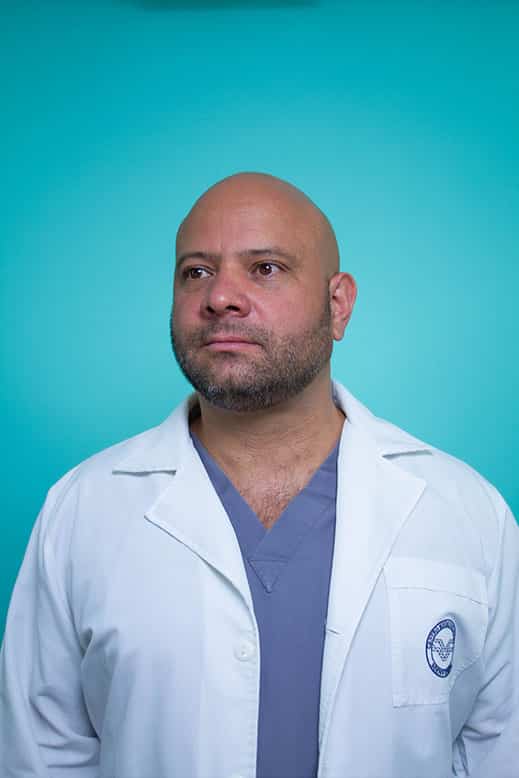One of the first tests performed to know the state of the mouth of patients are dental X-rays.
There are those who express to us their concern about undergoing a scan or X-ray, because of the radiation to which they are exposed.
This distrust is due to two main factors:
On the one hand, there is a general lack of knowledge about the levels of radiation that can be considered a health risk.
On the other hand, the relationship between cancer and the radiation to which we are exposed appears recurrently in the media.
It is obviously important to be aware of the dangers that radiation poses to people’s health.
However, it is necessary to distinguish between the different types, to know which ones we are continuously exposed to in our daily lives and what is a truly harmful dose.
What radiation are we exposed to during our lifetime?
First of all, it is necessary to clarify that we all live daily with the so-called ionizing radiations, which are natural and artificial.
Radiation present in nature is radiation that has not been created by human beings.
It is the one that comes from radioactive materials located in the earth’s crust, the radon gas that is in the rocks or the one that is present in seafood.
In fact, as a curiosity, seafood is the food with the highest concentration of natural radiation.
Radiation from dental X-rays is a minimal amount because we use digital devices.
On the other hand, there are the artificial radiations developed by the human species.
Contrary to what it may seem, the doses we receive artificially are much smaller than those produced by natural radiation.
Some examples of artificial radiation are those produced by talking on a cell phone, using a microwave or having dental – or any other type of – X-rays.
X-rays from medical sources
Specifically, the radiation that comes from certain medical examinations is X-rays.
X-rays are given off by X-rays
Enlarge image
X-RAYS
This type of X-rays encompasses different techniques:
Radiodiagnosis: captures images of the human body to identify lesions or diseases.
Radiotherapy: destroys tumor cells and tissues to fight cancer.
Nuclear medicine: uses small amounts of radioactive material to diagnose, treat and investigate certain conditions.
As dentists, we use radiodiagnostic techniques to capture images of our patients’ mouths on a daily basis.
The importance of dental X-rays
Dental X-rays are essential for a complete diagnosis of the patient.
Thanks to these tests, the dentist can capture images of the person’s teeth and bones (maxilla and mandible) in order to plan their treatment.
For professionals, it is essential to have this information about the patient’s oral cavity before starting procedures such as dental implant placement or treatments such as orthodontics.
In addition, X-rays are also used to safely diagnose oral diseases and problems, such as caries or periodontal diseases – gingivitis and periodontitis.
YOUR INITIAL ORAL EXAMINATION, FREE OF CHARGE
What types of dental X-rays are there?
Each oral test provides specific information about each person, so different dental X-rays are taken at the clinic.
Panoramic X-ray or orthopantomography
This is the most common test and is performed at the patient’s first visit to the dental clinic.
Thanks to this type of oral radiography, the dentist is able to analyze the state of the roots, check that there are no teeth included and know the anatomical elements of the mouth.
Full mouth image
Enlarge image
PANORAMIC RADIOGRAPHY
Cephalometry or teleradiography
This technique is especially useful when planning orthodontic treatments.
It consists of lateral radiographs of the skull through which the dentist checks the relationship and distance between the bony masses.
Thus, it is possible to identify malocclusions caused by incorrect mandibular development: class II (retrognathia) or class III (prognathism).
Dental CT
The dental CAT scan makes it possible to obtain three-dimensional images of both the maxilla and the mandible by means of X-rays.
By means of this test, a complete radiological study is obtained, where dental and bone structures are included.
This is a technique that is only performed in certain oral treatments, such as Implantology.
Periapical X-ray
It is an intraoral radiography that is performed by means of a small plate inside the mouth.
It is used to detect interproximal caries (that which is found between tooth and tooth) and to obtain a total image of the dental pieces.
Detects interdental caries
Enlarge image
PERIAPICAL RADIOGRAPHY
How radiation is measured
The unit of measurement of radiation dose is the millisievert (mSv).
In Spain, the Nuclear Safety Council (CSN) estimates that each person receives an average annual dose of 3.7 mSv in total.
Of this amount, 2.4 mSv originate from natural radiation.
Therefore, the remaining 1.3 mSv is due to the average radiation received from medical sources.
The dose we receive from this type (X-rays) is the highest of all artificial radiation.
What is the maximum radiation dose we can receive?
The damage caused by radiation depends on two fundamental factors:
The dose received.
The sensitivity of the various tissues and organs of the body.
Exposure to radiation can result in reddening of the skin, burns or hair loss.
In the long term, a person who is continuously subjected to radiation is more likely to develop cancer.
In fact, several epidemiological studies referred to by the Spanish Society for Radiological Protection indicate that the probability of developing cancer increases significantly when a person is subjected to doses of more than 100 mSv.
Scanners and digital X-rays
When you are going to undergo a radiological test, choose centers that have digital equipment.
How much radiation is produced by dental X-rays?
X-ray imaging always involves exposing the body to a small dose of radiation.
To mitigate these effects, in our dental clinic we have digital devices instead of conventional ones.
This benefits the individual significantly, as he or she is exposed to a much smaller amount of radiation.
In the following comparative table you will be able to see the great differences between the radiation produced by conventional tests and the digital ones we offer at DrAW Dental Clinic:
Diagnostic test Radiation levels in mSv
Head CT (conventional) 2 mSv
Head CBCT (digital) 0.02 mSv
Panoramic X-ray (conventional) 0.015 mSv
Panoramic radiography (digital) 0.005 mSv
Intraoral radiography (conventional) 0.005 mSv
Intraoral radiography (digital) 0.003 mSv
Dental X-rays and pregnancy
It is common for pregnant women to have many doubts about which dental treatments can be performed.
The effects of radiation on these patients depend mainly on the period of gestation in which they are pregnant.
The highest risk stage takes place between 8 and 15 weeks of pregnancy, since radiation can cause brain damage to the fetus at doses higher than 100 mSv.
Dental X-ray
Enlarge image
DENTAL X-RAYS WITH TAC
On the other hand, if the woman is between 16 and 25 weeks of gestation, the risk of fetal malformation is estimated at doses above 200 mSv.
On the other hand, it has not been demonstrated that there is a risk of brain damage in the fetus when the pregnant woman is subjected to radiation before week 8 and after week 25.
What to consider before undergoing X-rays
Both the 3D intraoral scan and dental X-rays -whether panoramic or intraoral- are tests that do not require any special preparation on the part of the patient.
What’s more, they take only a few minutes to perform.
On the day the person comes in for a test of this type, our staff will tell him or her what to do.
Basically, these instructions can be summarized as follows:
Remove earrings and necklaces, as well as any metallic element worn on the head and neck.
Put on the lead apron to protect the rest of your body from radiation.
As you can see, the dental X-rays we perform at the dentist’s office are simple and do not affect the patient.
In addition, as you have seen in the table above, we have digital equipment that greatly reduces the radiation they give off.



